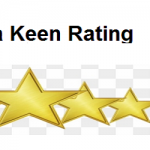Multisite Robots.txt Manager Wordpress Plugin - Rating, Reviews, Demo & Download

Plugin Description
A Robots.txt Manager Plugin for WordPress Multisite Networks. Quickly and easily manage all robots.txt files on a WordPress Multisite Website Network.
!!! Network Enabled Multisite Installs Only !!!
This Plugin Was Created For Multisite Networks > Network Activations Only!
For Support & Bugs
Please contact us directly if you need assistance or have found a bug. The WordPress Support forum does not notify us of new support tickets, no idea why, so contact us directly.
View, Report Bugs, Contribute!
Visit this Plugin on Github! Clone/fork yourself a copy, report a bug or submit a ticket & pull request!
Features:
- Network wide robots.txt file, shared across all sites.
- Append extra robots.txt file data per-website Admin.
- Create unique robots.txt files for each network Website.
- Manage all Websites from Network Administration Area.
- Manage a single Website through the Website Settings Admins.
- Auto-generated Sitemap URL’s, Upload Path & Theme Path.
- Mass update the all Websites on the Network in a single click.
- Quickly publish preset robots.txt files across the Network.
- Scan and clean old robots.txt file plugin data to clear out conflicts.
Quick Info:
- The default “Network Wide” robots.txt file is NOT a live robots.txt file.
- If you deactivate the plugin, no options are removed but the plugins robots.txt file(s) are no longer displayed.
-
If you delete this plugin, all options and settings will be removed from the database, for all Websites.
-
Get The Plugin: Download > Install > Network Activate
- Network Access: Network Admin > Settings Tab > MS Robots.txt Link
- Website Access: Website Admin > Settings Tab > MS Robots.txt Link
Make It Work:
- Network Admin: Select either either with “Publish the network robots.txt file to all network websites” or “Publish the network robots.txt file to network websites you are a member of” then click the “update settings” button to publish the robots.txt files.
- Website Admin: Modify the appended robots.txt file (or create a website unique robots.txt file) then click the “update website rules” button to publish your changes.
Arbitrary section
Understanding the Default Settings
When you first enter the plugin admin via the Network Admin, the displayed robots.txt file is the default “network only” copy.
The Network Append Marker
The marker {APPEND_WEBSITE_ROBOTSTXT} within the Network Robots.txt File is replaced by Website unique robots.txt file append rules. Use the marker in your customized Network robots.txt files to automatically append the Website robots.txt file rules when the Network is updated.
Robots.txt Files within Directories
-
This plugin WILL render robots.txt files within directories – however,
-
Search Engine Spiders only read robots.txt files found within the root directory of a Website. Spiders do not read robots.txt files within directories, such as: domain.com/PATH-or-FOLDER/robots.txt is NOT a valid location.
-
From Google: “The robots.txt file must be in the top-level directory of the host…..Crawlers will not check for robots.txt files in sub-directories.”
Testing Robots.txt Files
- Use Google’s Webmaster Tools to Validate your Robots.txt Files…. with Google at least.:
-
Log into your Google Account and access the Log into your Webmaster Tools feature. Select a Website or Add a Website….
-
On the Webmaster Tools Home page, click the site you want.
- Under Health, click Blocked URLs.
- If it is not already selected, click the Test robots.txt tab.
- Copy the content of your robots.txt file, and paste it into the first box.
- In the URLs box, list the site to test against.
- In the User-agents list, select the user-agents you want.
- https://developers.google.com/webmasters/control-crawl-index/docs/robots_txt
New Website Added to Network
- If all Websites use the saved Network default robots.txt file, click the “update setting” button to copy the default robots.txt file over to any new Websites you have.
- Per Site: Then click the “update website rules” button to copy the default robots.txt file to this Website.
Disabling
- Disable a Website: Within the website plugin admin, for each unique website, scroll down and click the “Disable the saved robots.txt file…” checkbox then click the submit button. This will disable the robots.txt file the Website only, making the WordPress default robots.txt file display.
- Disable Across Network: Within the network plugin admin, scroll down and click the “Disable saved robots.txt files…” checkbox, then click the submit button.
= Presets
- This feature allows you to quickly duplicate premade robots.txt files and a sitemap structure url to the default network robots.txt file. This action does not publish the robots.txt files to the network.
Recommended Sitemap Plugins
- Google XML Sitemaps: https://wordpress.org/extend/plugins/google-sitemap-generator/
- Better WordPress Google XML Sitemaps: https://wordpress.org/extend/plugins/bwp-google-xml-sitemaps/
- Search For Others: https://wordpress.org/extend/plugins/search.php?q=multisite+sitemap
For “real” Multisite HOST Networks, use the WordPress plugin: BWP Google XML Sitemaps – This plugin will list each Websites Sitemap URL’s in the Root Network Website’s robots.txt file.
Screenshots

Network Admin – All Features Shown

Network Admin – Preset Robots.txt File Loaded & Published

Network Admin – Cleaner Tab

Website Admin – All Features Shown

Website Admin – Robots.txt File Using Append Rules

Website Admin – Custom Robots.txt File In Use




